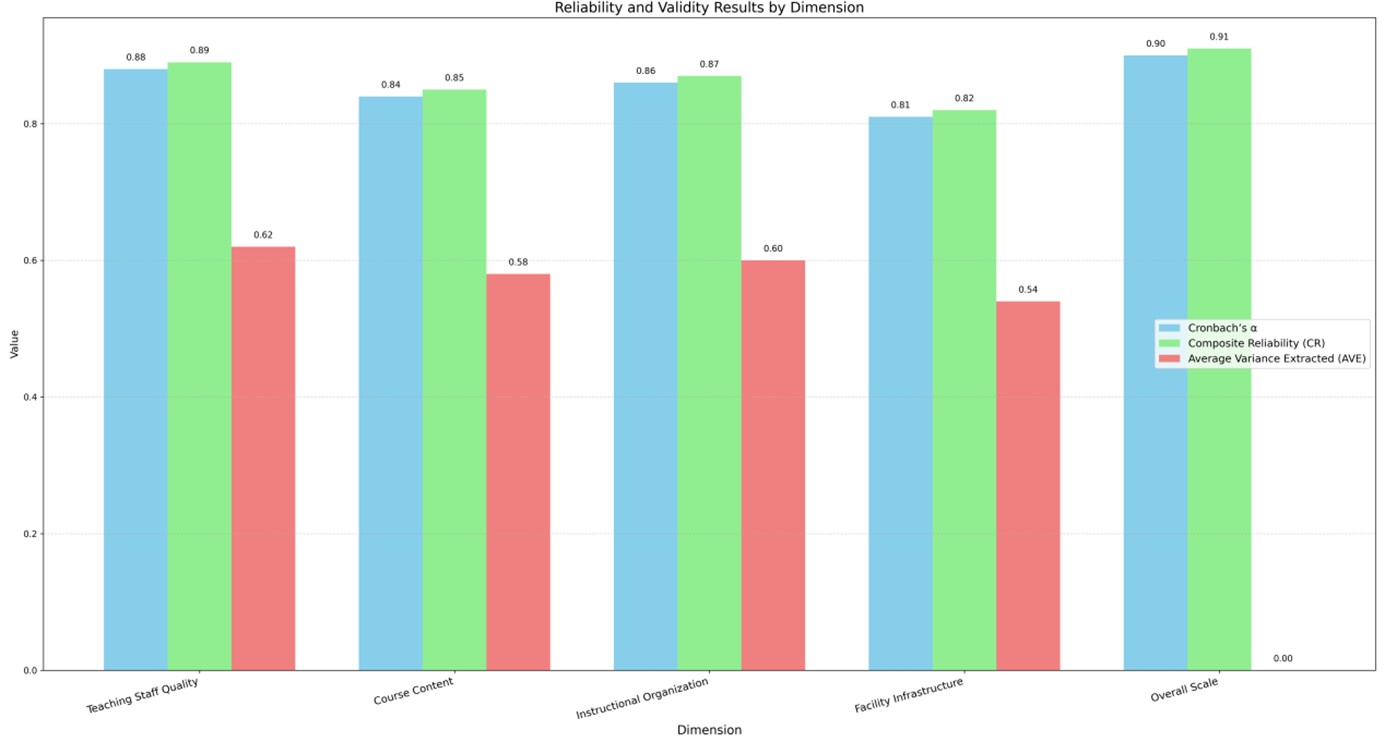Research on Learning Satisfaction in Public Physical Education Courses at Higher Education Institutions
Abstract
This study investigates students’ satisfaction with public physical education courses at higher education institutions, aiming to understand their overall evaluations and the factors that influence them. Drawing on domestic and international literature, we designed a questionnaire encompassing four dimensions—teaching staff quality, course content, instructional organization, and facility infrastructure—and collected 500 valid responses from five universities. Descriptive statistics were used to analyze respondents’ demographic characteristics and satisfaction distributions. Reliability and validity of the scale were assessed via Cronbach’s α and exploratory/confirmatory factor analyses. Group differences by gender, year level, and major were examined through t-tests and one-way ANOVA, and a multiple linear regression model was employed to explore the effects of each dimension on overall satisfaction. Findings indicate that overall satisfaction is above average, with significant differences across gender, year level, and major. Teaching staff quality, course content and organization, and facility conditions all have significant positive impacts on satisfaction. This research provides empirical support for reforming and enhancing public physical education courses, recommending improvements in faculty training, course design, and facilities to further enrich students’ learning experiences and course quality.
References
[2] Liu, X., et al. (2022). [Retracted] Analysis and research on influencing factors of college students’ satisfaction with physical education. Journal of Environmental and Public Health, 2022, 7506157. https://doi.org/10.1155/2022/7506157
[3] Cruz, A. B., & Kim, H.-D. (2023). Transformational leadership of physical education instructors and university students' satisfaction with online classes. Frontiers in Psychology, 14, 1259218. https://doi.org/10.3389/fpsyg.2023.1259218
[4] Wang, C., et al. (2022). Effects of blended learning in physical education among university students: A systematic review. Education Sciences, 12(8), 530. https://doi.org/10.3390/educsci12080530
[5] Wang, C., et al. (2023). Blended learning in physical education: A systematic review. Frontiers in Public Health, 11, 1073423. https://doi.org/10.3389/fpubh.2023.1073423
[6] Kruja, D., Ha, H., & Tabaku, E. (2021). Students’ perception and satisfaction of services provided by public and private higher education institutes: A case study in Albania. International Journal of Quality and Service Sciences, 13(3), 359–380. https://doi.org/10.1108/IJQSS-02-2020-0022
[7] Slavinski, T., et al. (2021). Academic performance and physical activities as positive factors for life satisfaction among university students. Sustainability, 13(2), 497. https://doi.org/10.3390/su13020497
[8] Zheng, W., Ma, Y.-Y., & Lin, H.-L. (2021). Research on blended learning in physical education during the COVID-19 pandemic: A case study of Chinese students. SAGE Open, 11(4), 21582440211058196. https://doi.org/10.1177/21582440211058196
[9] Ku, G. C.-M., & Shang, I.-W. (2020). Using the integrated Kano–RIPA model to explore teaching quality of physical education programs in Taiwan. International Journal of Environmental Research and Public Health, 17(11), 3954. https://doi.org/10.3390/ijerph17113954
[10] Rahman, S. M., et al. (2020). Assessing students' satisfaction in public universities in Bangladesh: An empirical study. The Journal of Asian Finance, Economics and Business, 7(8), 323–332. https://doi.org/10.13106/jafeb.2020.vol7.no8.323


This work is licensed under a Creative Commons Attribution 4.0 International License.
Copyright for this article is retained by the author(s), with first publication rights granted to the journal.
This is an open-access article distributed under the terms and conditions of the Creative Commons Attribution license (http://creativecommons.org/licenses/by/4.0/).








1.png)

















